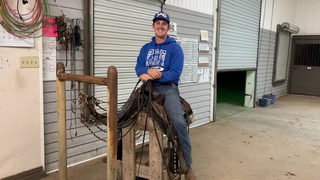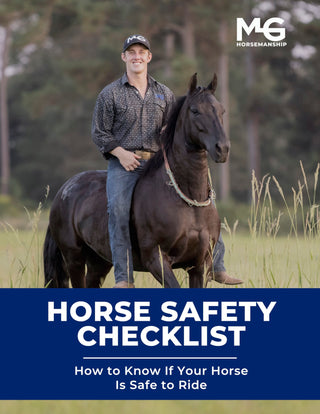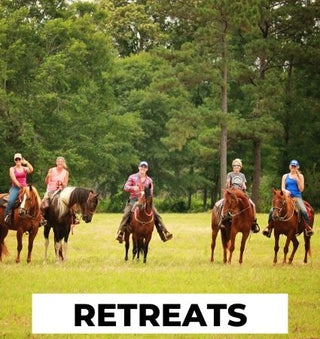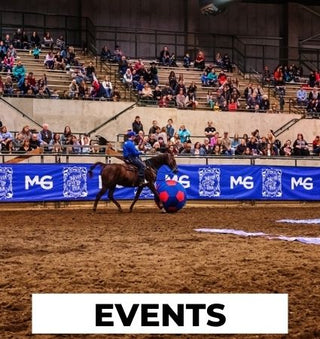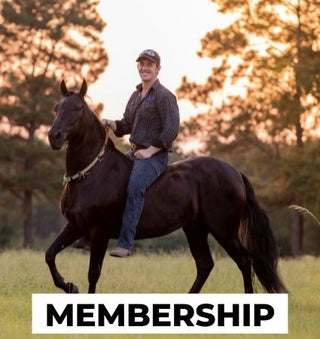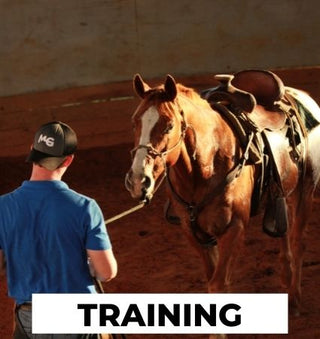Watch the Video Here or continue reading below!
When it comes to competing in the show ring, how you hold your reins can make or break your performance. Each class and discipline has its own style, and understanding these subtle differences is key to success—and to avoiding disqualification. In this guide, we’ll break down the correct way to hold reins for a variety of show-ring classes, including Western Pleasure, Reining, Gaited Horses, Working Cow Horse (Romal), English, and Roping.
1. Holding Split Reins for Western Classes
Used in: Western Pleasure, Reining, Trail, Versatility Ranch Horse
Split reins are a staple in Western riding, named for their two separate lengths of rein not connected at the ends.
✅ Proper Split Rein Grip:
-
Use your dominant hand (usually left in reining unless otherwise required by the association).
-
Place your index finger between the reins.
-
The middle finger and thumb grip the reins just behind the horse’s neck.
-
Your free hand must not touch the reins—this is a strict rule in many Western classes.
-
Slack goes to the same side as your rein hand.
📌 Pro Tip: Always read the rulebook for the class or association. Some require riders to use a specific hand regardless of dominance.
2. Reins for Gaited Horse Competitions
Used in: Gaited Horse Shows, English Gaited Classes, Country Pleasure
Gaited horses often require subtle communication through consistent rein contact.
✅ Proper Grip for Gaited Classes:
-
Sit upright with your hands held within an imaginary 6-inch by 6-inch box in front of your body.
-
Hold reins with palms facing each other and thumbs up.
-
Maintain consistent, light contact with the horse’s mouth.
-
Optional: Grab the slack crossover for added consistency.
📌 Pro Tip: All communication should come from slight movements in your fingers—especially your last two or three. This is how fine-tuned gaited horses respond.
3. Using Romal (or Romel) Reins in Working Cow Horse
Used in: Working Cow Horse, Versatility Ranch Horse, Some Mustang Makeover Events
Romal reins are traditional in Western disciplines involving cattle and precision work.
✅ Proper Romal Rein Hold:
-
Hold reins in one hand only, vertically positioned.
-
Your thumb faces upward, with slack (the popper) resting on your off-side hip.
-
Other hand must remain still and unused—often resting on the hip.
-
Read the rules: some associations have strict guidelines for Romals vs. Split Reins.
📌 Pro Tip: Romal reins are great for horses that need squaring up or refinement in the bridle.
4. English and Contact Disciplines
Used in: Dressage, Hunter/Jumper, English Pleasure, Some Gaited Shows
Whether you’re riding a dressage test or competing in hunter classes, contact and balance are key.
✅ Proper English Rein Grip:
-
Hold the reins with palms facing each other, thumbs on top.
-
Keep your elbows by your sides and create a straight line from your elbow to the horse’s mouth.
-
All cues come from soft closing or opening of your fingers.
📌 Pro Tip: Imagine your arms forming a 90-degree angle. You want a straight communication line, not an awkward curve from hand to bit.
5. Holding Reins While Roping
Used in: Ranch Roping, Team Roping, Ranch Versatility Events
Roping requires reins that don’t get in the way of your rope coils or quick movements.
✅ Proper Roping Rein Hold:
-
Use thin, lightweight reins (such as leather or Biothane).
-
Grip reins with middle and ring fingers in your non-rope hand.
-
The reins rest in your fingers while your other hand manages the rope.
-
Your horse should be trained to respond to neck reining with minimal finger movement.
📌 Pro Tip: The reins should feel almost invisible so you can freely swing your rope while maintaining control.
Final Thoughts: Why Rein Handling Matters
Holding your reins properly not only helps you perform better but also shows judges you know what you’re doing. Incorrect rein use can result in point deductions or disqualification, even if your horse performs perfectly. Always double-check the class specifications and association rules, and train your horse to respond to subtle cues.


